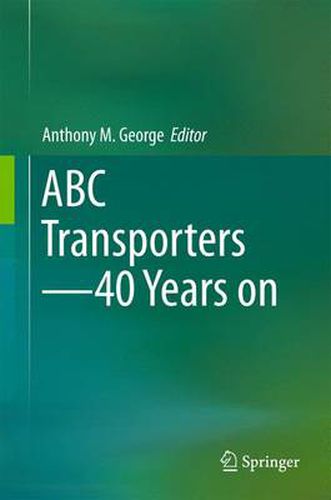Readings Newsletter
Become a Readings Member to make your shopping experience even easier.
Sign in or sign up for free!
You’re not far away from qualifying for FREE standard shipping within Australia
You’ve qualified for FREE standard shipping within Australia
The cart is loading…






This title is printed to order. This book may have been self-published. If so, we cannot guarantee the quality of the content. In the main most books will have gone through the editing process however some may not. We therefore suggest that you be aware of this before ordering this book. If in doubt check either the author or publisher’s details as we are unable to accept any returns unless they are faulty. Please contact us if you have any questions.
This book provides new structural, biochemical, and clinical information on ABC transporters. The authors explore and describe the state of the art of research, knowledge, and prospects for the future for this important family of proteins. The first ABC transporter was discovered in 1973 and was named P-glycoprotein. It elicits resistance to cytotoxic drugs, chiefly in human tumours, within which chemotherapy failure is observed in about 50% of cases. Together with its complex pharmacology, and even a suspected role in Alzheimer’s disease, this ABC transporter still eludes a clinical solution to its multidrug resistance property. ABC transporters are integral membrane active proteins and they belong to one of the largest protein families across all species. Their myriad roles encompass the import or export of a diverse range of allocrites, including ion, nutrients, peptides, polysaccharides, lipids, and xenobiotics. They are of major medical importance with many members elaborating multidrug resistance in bacteria, fungi, yeast, parasites, and humans. Other ABC transporters are involved in a number of inherited diseases, including cystic fibrosis, macular degeneration, gout, and several other metabolic disorders
$9.00 standard shipping within Australia
FREE standard shipping within Australia for orders over $100.00
Express & International shipping calculated at checkout
This title is printed to order. This book may have been self-published. If so, we cannot guarantee the quality of the content. In the main most books will have gone through the editing process however some may not. We therefore suggest that you be aware of this before ordering this book. If in doubt check either the author or publisher’s details as we are unable to accept any returns unless they are faulty. Please contact us if you have any questions.
This book provides new structural, biochemical, and clinical information on ABC transporters. The authors explore and describe the state of the art of research, knowledge, and prospects for the future for this important family of proteins. The first ABC transporter was discovered in 1973 and was named P-glycoprotein. It elicits resistance to cytotoxic drugs, chiefly in human tumours, within which chemotherapy failure is observed in about 50% of cases. Together with its complex pharmacology, and even a suspected role in Alzheimer’s disease, this ABC transporter still eludes a clinical solution to its multidrug resistance property. ABC transporters are integral membrane active proteins and they belong to one of the largest protein families across all species. Their myriad roles encompass the import or export of a diverse range of allocrites, including ion, nutrients, peptides, polysaccharides, lipids, and xenobiotics. They are of major medical importance with many members elaborating multidrug resistance in bacteria, fungi, yeast, parasites, and humans. Other ABC transporters are involved in a number of inherited diseases, including cystic fibrosis, macular degeneration, gout, and several other metabolic disorders